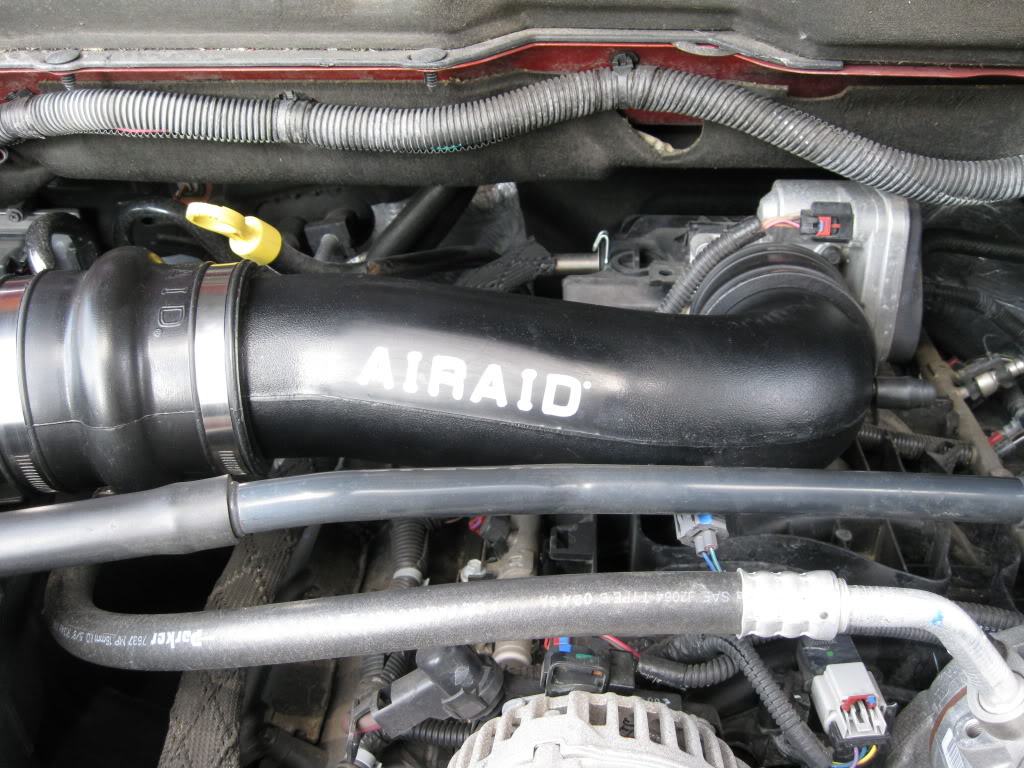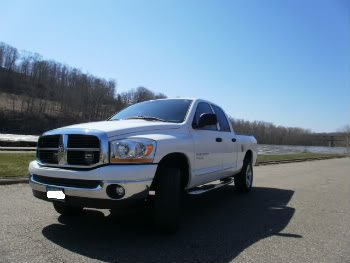Air intake resonator...need it or not?
#1
I was milling around my engine bay today and I was thinking about the intake resonator. I've taken it off before when I put my cheapo intake on and saw that there is a sensor tapped into the resonator. Question is, when I get a better intake, will it run directly into the throttle body or is the resonator the last mounting point? Personally I think it's fugly and would love to cast it into storage if and when I can.
#2
#5
I can hear mine some, but only at WOT with the stock box.
I got my MIT cheap or I would have just left the "Hemi Hat" on it. No real gains from it. They claim up to 400 more cfm over stock.
The only issue I see with the sewer pipe jobs, is if there are any gaps in the pipes where they are glued into the couplers, this will cause turbulence and cause interrupted airflow. The MIT pipe is one solid piece and buts up against the TB and air box under the rubber boot connectors, so it is completely smooth, thus no turbulence.
This is what causes the slight restriction in the Hemi hat. The air entering and exiting the holes in the resonator causes the same effect.
I got my MIT cheap or I would have just left the "Hemi Hat" on it. No real gains from it. They claim up to 400 more cfm over stock.
The only issue I see with the sewer pipe jobs, is if there are any gaps in the pipes where they are glued into the couplers, this will cause turbulence and cause interrupted airflow. The MIT pipe is one solid piece and buts up against the TB and air box under the rubber boot connectors, so it is completely smooth, thus no turbulence.
This is what causes the slight restriction in the Hemi hat. The air entering and exiting the holes in the resonator causes the same effect.
Last edited by lxman1; 04-15-2011 at 11:49 PM.
#6
#7
I call it the "Hemi Hat" but it's basically a baffle. A resonator at least by my definition is basically a straight through tube whose walls are designed to create a resonate frequency tuned to cancel out a corresponding frequency. The stock resonators on a Rams exhaust are true resonators.
A baffle would be a device that redirects or absorbs sound to reduce the strength (measured in decibels) and is not smooth or straight through in design.
If you open the "Hemi Hat" you will see chambered walls that redirect sound, bouncing them off one another to reduce noise.
A resonator has little effect on the rate of CFM (cubic feet per minute) while baffles by design do indeed effect CFM negatively.
If you want to increase CFM into the throttle body then simply remove the baffle.
In a relatively lightly modded truck, removing the "Hemi Hat" replacing it with less restrictive tubing and a high quality drop-in filter is quite sufficient. As you get into higher end performance mods that require more air (and most importantly that scavenge exhaust gases out of the engine) then you will see a greater benefit from a true CAI system, mainly by virtue of the greater surface area of a cone filter as opposed to a flat filter.
A baffle would be a device that redirects or absorbs sound to reduce the strength (measured in decibels) and is not smooth or straight through in design.
If you open the "Hemi Hat" you will see chambered walls that redirect sound, bouncing them off one another to reduce noise.
A resonator has little effect on the rate of CFM (cubic feet per minute) while baffles by design do indeed effect CFM negatively.
If you want to increase CFM into the throttle body then simply remove the baffle.
In a relatively lightly modded truck, removing the "Hemi Hat" replacing it with less restrictive tubing and a high quality drop-in filter is quite sufficient. As you get into higher end performance mods that require more air (and most importantly that scavenge exhaust gases out of the engine) then you will see a greater benefit from a true CAI system, mainly by virtue of the greater surface area of a cone filter as opposed to a flat filter.






